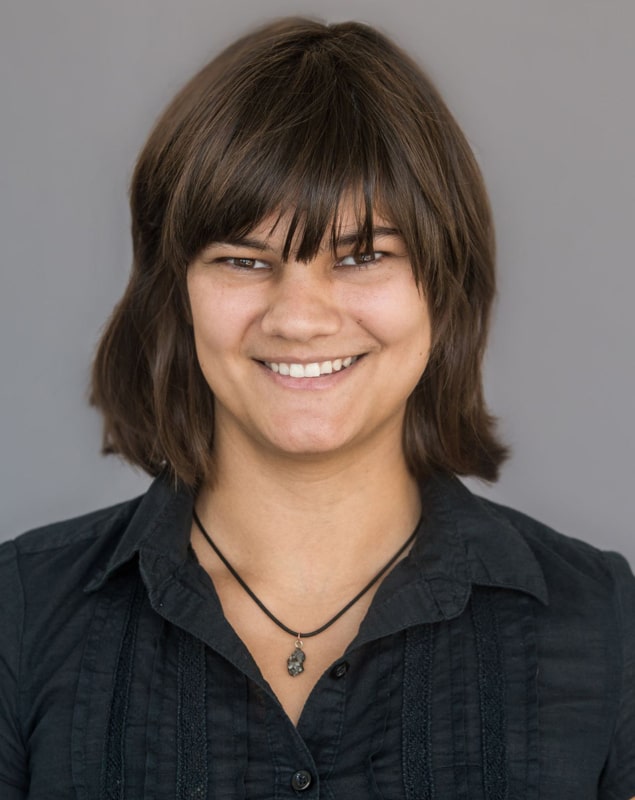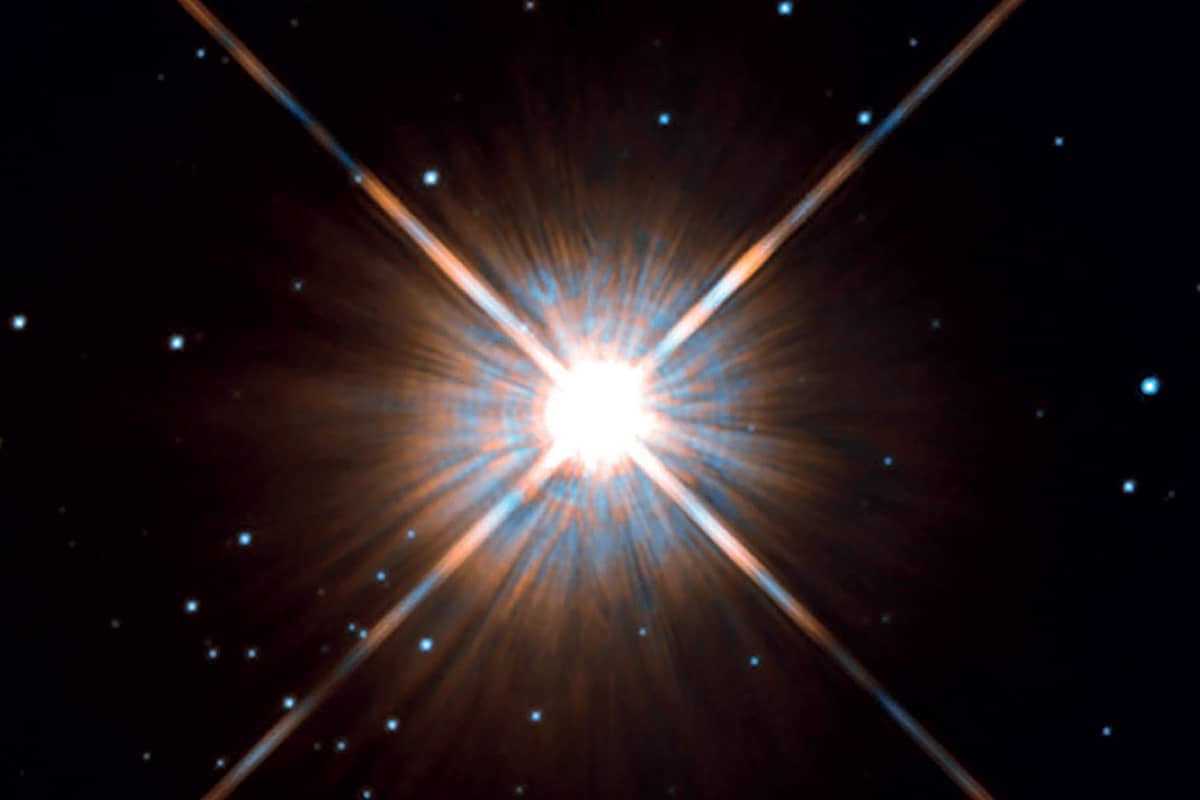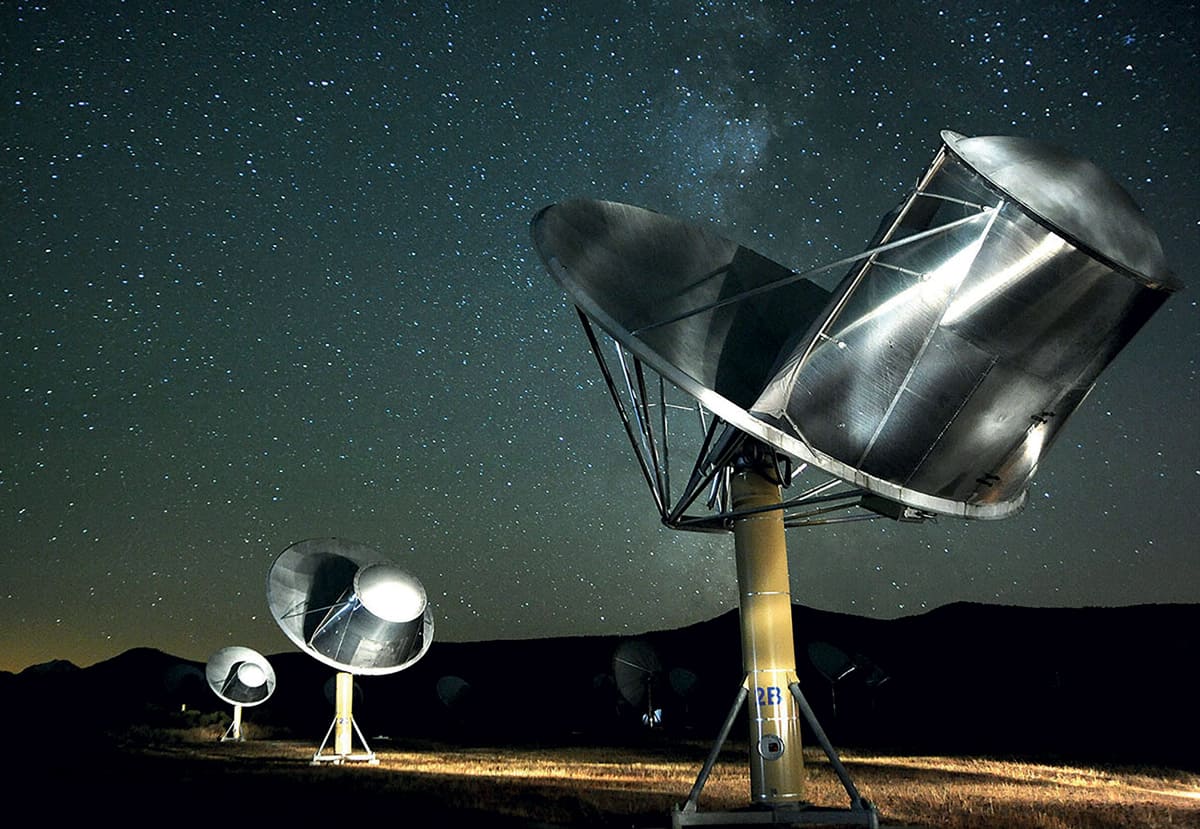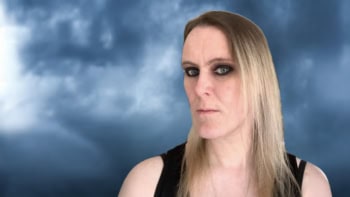Sofia Sheikh is one of a handful of postdoctoral researchers who have specialized in the search for extraterrestrial intelligence. She talks to David Appell about strange signals, Star Trek, picking a tricky research field and the importance of mentorship

When a suspicious radio signal emerged from the direction of the solar system’s nearest neighbouring star in 2019, the Breakthrough Listen project put Sofia Sheikh in charge of figuring out what produced it. Was it from an alien civilization from an exoplanet in the habitable zone orbiting Proxima Centauri, just 4.2 light-years from Earth? Or was it a radio signal from any of an almost innumerable number of potential sources on and around Earth?
Sheikh, a first-year postdoctoral researcher, was then part of the Berkeley SETI (Search for Extraterrestrial Intelligence) Research Center at the University of California, Berkeley. She co-ordinated a team that analysed the collected data in great detail, looking for similar signal patterns. Meanwhile, other project members searched, as best they could, through whatever public information they could gather on satellite transmissions and planetary spacecraft. They even examined aircraft in Australia that happen to use frequencies close to the suspicious five-hour signal. Dubbed the Breakthrough Listen Candidate 1 (BLC1), the signal was detected by the 64-metre Parkes Murriyang radio telescope in New South Wales, Australia.
Now 26 years old, Sheikh received her undergraduate degree in physics and astronomy from the University of California at Berkeley in 2017. While there, she worked with the Breakthrough Listen project to plan a search campaign of the Earth Transit Zone. It’s a special band of space from which an extraterrestrial observer would be able to detect Earth, by seeing it transit in front of the Sun. In this region, our own technosignatures – a clear indication of past or present technological activity, pointing out the existence of an advanced planetary civilization – can be easily picked up, thereby making potential advanced alien civilizations elsewhere more inclined to send radio signals our way. The work was published in the Astrophysical Journal in 2020 with Sheikh as the lead author (160 29).
When she entered graduate school at Pennsylvania State University, Sheikh thought she would move from studying technosignatures to the more accepted field of exoplanet research. “It’s adjacent, but better supported,” she felt. But through talking to her future adviser, astronomer Jason Wright, a leader in the SETI field, she remembered what she loved so much about technosignature research. “I thought, even if it’s tricky, I want to continue,” recalls Sheikh, who ended up doing a PhD on radio techno-signatures and pulsars.
10th PhD in SETI
Earning her PhD in 2021, Sheikh was just the 10th person to finish a dissertation in SETI in the physical sciences, says Wright. In September last year, she was awarded a Mathematical and Physical Sciences Ascending (MPS-Ascend) postdoctoral research fellowship by the National Science Foundation. Sheikh moved to SETI as of January this year, and is now working with the legendary astronomer Jill Tarter and Andrew Siemion, director of the Berkeley SETI Research Center and principal investigator for the Breakthrough Listen programme. This $100m privately funded programme was launch in 2015 by Russian billionaires Julia and Yuri Milner.
“The combination of Sofia’s keen scientific abilities and audacious passion for carving her path is truly remarkable,” says Siemion, adding that Sheikh is a “world-class scientist who is demonstrating vision, tenacity and academic excellence in researching a profound and challenging topic”. Tarter herself agrees, saying that “When you work on a potentially multi-generation project, you really need to think seriously about training your replacements. Sofia’s MPS-Ascend award gives us the opportunity to invoke the next generation and think laterally about what/who/where we can expand opportunities for commensal observing programmes.”

The BLC1 signal was first identified by Shane Smith, while an undergraduate student at Hillsdale College in Michigan, when he was sifting through four million signals from a 26-hour period of the Parkes radio-telescope data. It was soon shared on Breakthrough Listen’s Slack platform, and initial screening tests quickly ruled out any obvious sources of radio interference. The team then began looking for other interference in detail. Sheikh had a “could-this-be-it?” moment, she recalls. “I just stopped for a second after seeing the BLC1 plot, where I thought this is everything we wanted it to be.”
Sheikh and her team analysed an estimated 160 terabytes of data that the telescope had also collected, looking for similar signals to the BLC1 signal that had been identified. It required a great deal of learning along the way and a lot of coding in Python to characterize signals quickly and efficiently. The COVID-19 pandemic made for even more challenging conditions. “It was fun to focus on one thing, dig deep, with a detective mind set,” she tells Physics World. The whole team worked very hard, she says, even meeting on Christmas day, 2020.
The BLC1 signal happened to be “weird” in just the right way to fool our filters, but it was a good dry run for when the next tantalizing signal arrives
Sofia Sheikh
Ultimately Sheikh and her colleagues found around 60 signals that had many of the same characteristics as the original BLC1 candidate signal, but remained after the telescope was pointed away from Proxima Centauri. “We can therefore say confidently that these other signals are local to the telescope and human-generated”, she told SciTechDaily in October. Appearing at regular frequency intervals, they likely came from oscillators commonly used in various electronics devices. The BLC1 signal, she explains, “happens to be ‘weird’ in just the right way to fool our filters”. Despite this, their analysis let them develop a great deal of code to characterize signals quickly and efficiently. By helping to improve search algorithms, their work was effectively a good dry run for when the next tantalizing signal arrives, she adds.
The Guardian broke the story of the BLC1 signal on 18 December 2020, and soon the news was everywhere. A screenshot on a YouTube video about the work included Sheikh’s e-mail address, and she quickly started receiving comments from the public. Not all of them, however, were friendly. Sheikh recalls some nasty e-mails targeting her for being a woman in STEM; as well as her identity, with a Pakistani last name. Luckily, Sheikh’s personal experiences as a woman in science “for the most part hasn’t been too much of an issue” except for occasional microaggressions that “you brush off”. Good, supportive mentors, such as Wright and Siemion, have helped in that regard, she adds.
Star Trek and “impossible” ideas
Sheikh grew up in South Carolina, where her father was a gastroenterologist and her mother a homemaker and stained-glass artist. She was “for sure” a fan of science fiction, and watched plenty of Star Trek with her dad. She was also captivated by books such as Physics of the Impossible by physicist and science communicator Michio Kaku.
While by no means unique to SETI researchers or astronomers in general, her interest in science fiction has helped Sheikh develop plans to look at alternative strategies for detecting intelligent alien life. One could be to look for Clarke exobelts – rings of geosynchronous satellites around exoplanets. Another would be to search gravitational waves from accelerating spaceships moving somewhere nearby in the galaxy.
As part of her new position at the SETI Institute, Sheikh is also developing a mentoring programme involving science and coding for sophomore community college students in the Bay Area around San Francisco. She plans to take feeds from the refurbished Allen Telescope Array in northern California and run projects for students to understand the radio-frequency interference environment. At the same time, she will provide students with the skills to take on other astronomy and physics projects.

Rising star
Today, Sheikh is rising to prominence in the field, speaking at conferences and publishing recognized papers, serving as lead author on an October 2021 Nature Astronomy paper that presented the analysis of the BLC1 signal (5 1153). Sheikh has also been invited to collaborate on important ventures, like the Characterizing Atmospheric Technosignatures project led by Adam Frank of the University of Rochester in New York. The study will build a library of technosignatures produced by current-day Earth that examines how sensitive our state-of-the-art instrumentation can be at detecting those signals. It’s the first NASA non-radio techno-signature grant ever awarded.
So what does Sheikh attribute her success to, at such a young age? Her “incredible mentors” Jason Wright and Andrew Siemion played a key role. Sheikh also advocates “always saying yes to speaking opportunities and conferences to get your work out there.” Young students who want to get to the cutting edge of any scientific field need to build a network, attend conferences, workshops and meetings. “See if you can find a place to show up.” But just as important, Sheikh believes, is to try your best to “juggle a half-dozen projects at any given time”. What you need to do, she says, is “to be involved with everything!”
While neither a pessimist nor optimist about finding extraterrestrial life during her career, let alone a large spaceship appearing over London or Johannesburg, “the fact that we’ll have the technology is exciting” she says. Sheikh is now open to looking at other unusual ways for possibly detecting intelligent alien life.



